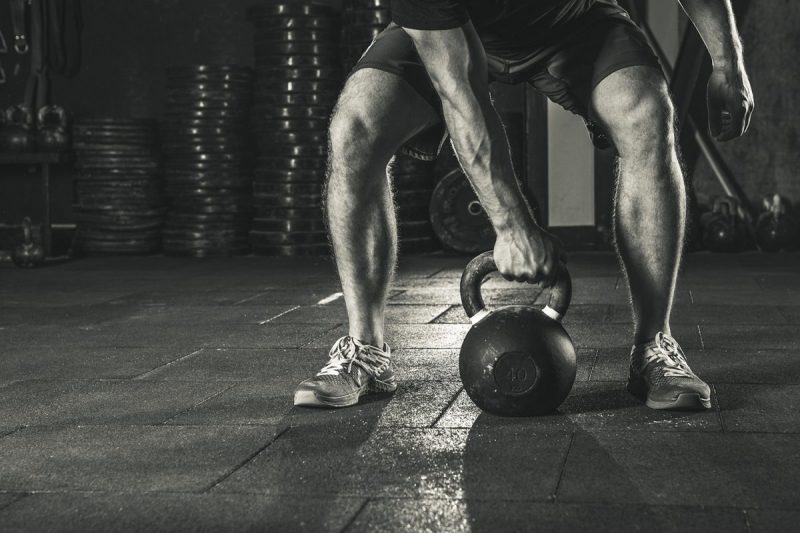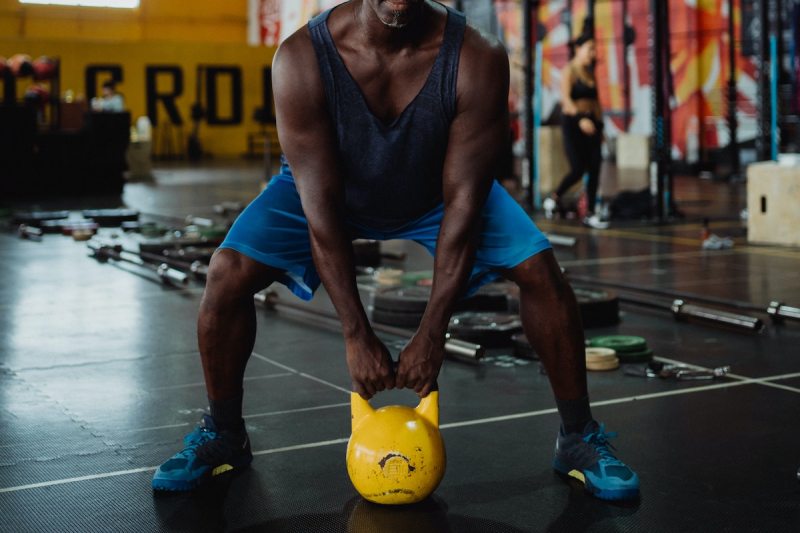The importance of building lower body strength can hardly be overemphasized. The muscles in the legs are integral to general body movement, and training them is vital for strength.
There’s a myriad of equipment options for training legs, and kettlebells may not be the most popular option, but they still do the job. Regular kettlebell leg workouts could give you the legs you want in no time, and we’ve laid out all the exercises you should add to your leg day workout routine.
Benefits of a strong lower body

Building a strong lower body has immense health and fitness benefits. The muscles in the lower body are the biggest in the body, so strengthening them further increases your metabolic rate and aids in weight management.
The muscles in your legs also help with stability. Sturdy legs transfer to upper-body push and pull exercises because they uphold your body, keeping you stable and firm. For example, bent-over barbell rows would be easier if you had strong hamstrings. In the same way, you’d get better at standing overhead presses if you had strong glutes.
Other benefits of a strong lower body are aesthetics, improved posture and back health, better joint health, and enhanced core strength.
Can you build your legs with just kettlebells?

According to the National Academy of Sports Medicine, kettlebells are effective in strengthening the glutes, hamstrings, and calves. Their user-friendly design allows you to lift and drop them easily, building full-body strength. It is no wonder that they are one of the earliest resistance training tools, dating back to the 1700s.
Like any other piece of gym equipment, kettlebells work just fine for building big, strong legs and can be adapted into many exercises. So, if you only have access to kettlebells or just prefer them, it’s time to start working out!
5 essential lower-body kettlebell exercises

Goblet squats
Goblet squats are a great exercise for training the quads through the proper range of motion. The exercise focuses on contracting the quads as opposed to squatting as much weight as possible. Here’s how to do a goblet squat with kettlebells.
Instructions:
- Grab a kettlebell heavy enough to challenge your quads but also light enough that you can hold it up.
- Hold the kettlebell by its sides (the horns) at chest level and place your feet shoulder-width apart.
- Bend your knees and lower your body into a squat, pushing your hips back like you’re sitting in a chair.
- When your thighs are parallel to the floor or just below parallel, push through your heels to stand back up.
Recommended sets and reps: 3 sets of 8-15 reps
Reverse lunges
Reverse lunges strengthen all the major muscles in the legs but target the glutes and quads. The exercise also requires some stability so the core is not left out. Follow these instructions to do reverse lunges like a pro.
Instructions:
- Either hold up a single kettlebell to your chest or hold one in each arm by your sides.
- Position your feet shoulder-width apart.
- Take one step back, landing on the ball of your foot and lowering your hips.
- Bend both knees to just about 90 degrees.
- Stand back up, pushing through your front heel to return to the starting position.
- Repeat with the other leg (take the other leg back this time).
Recommended sets and reps: 3 sets of 10-12 reps for each leg.
Weighted glute bridges
Glute bridges work the glutes and hamstrings. While you can perform this exercise with only your body weight, using weights like kettlebells will provide more resistance, making you feel the burn even more.
Instructions:
- Choose a weight that’s not too heavy – something you can comfortably place on your lower abdomen or hips.
- Lie on your back with your knees bent and feet flat on the ground, hip-width apart.
- Place the kettlebell on your lower abdomen or hips, holding it with one or both hands to keep it stable.
- Press through your heels to lift your hips towards the ceiling, squeezing your glutes at the top of the movement. Your body should form a straight line from your knees to your shoulders.
- Hold the lifted position for a second, then slowly lower your hips to the ground.
- Repeat the movement.
Recommended sets and reps: 4 sets of 8-12 reps.
Single leg RDLs
Romanian deadlifts, like glute bridges, also work the hamstrings and glutes through hip extension. Here’s how to carry out the single-leg kettlebell version.
Instructions:
- Stand upright with your feet hip-width apart.
- Shift your weight onto one leg, slightly raising the free leg off the ground.
- Hold a kettlebell in the hand opposite the leg you’ll be working with.
- Hinging at the hips and extending the free leg behind you for balance, lower the kettlebell towards the ground and keep it close to your standing leg.
- As you go down, ensure your back is straight and your standing knee is slightly bent.
- When your back is parallel or almost parallel to the ground, push back up through your heel.
- Repeat the movement.
Recommended sets and reps: 4 sets of 8-15 reps for each leg.
Bulgarian split squats
Bulgarian split squats engage the quads and glutes while tasking the core to maintain balance. While dumbbells are more popular for this movement, kettlebells are also great. Following these instructions for the kettlebell Bulgarian split squats is sure to help you make gains:
Instructions:
- Position a bench or stable platform behind you. It should be around knee height.
- Grab a kettlebell or two.
- If you’re only using one kettlebell, you can hold it up in a goblet squat position or allow it to hang by your side. If you’re using two, both kettlebells can hang on either side.
- Place one leg on the stable platform or bench behind you and stand forward with the leg on the ground far enough that when you squat down, your knee stays in line with your foot.
- Lower your body by bending the knee and hip of your front leg until the thigh is parallel to the ground.
- Push through your heel to return to the starting position.
- At the end of one set, perform another set, placing the leg on the bench on the ground this time.
Recommended sets and reps: 3 sets of 8-15 reps for each leg.
Tips for maximizing muscle gains

- Keep your workout intense; choose weights that challenge you but can still be controlled.
- Reduce your tempo throughout each set. Try to control the movement, especially in the eccentric part of the exercise.
- Make sure you incorporate progressive overload. Slowly increase the weight or number of reps over time to maintain intensity.
- Start light and learn the form. Performing any exercise is a skill, and you must learn how to carry out exercises efficiently before adding more weight.




